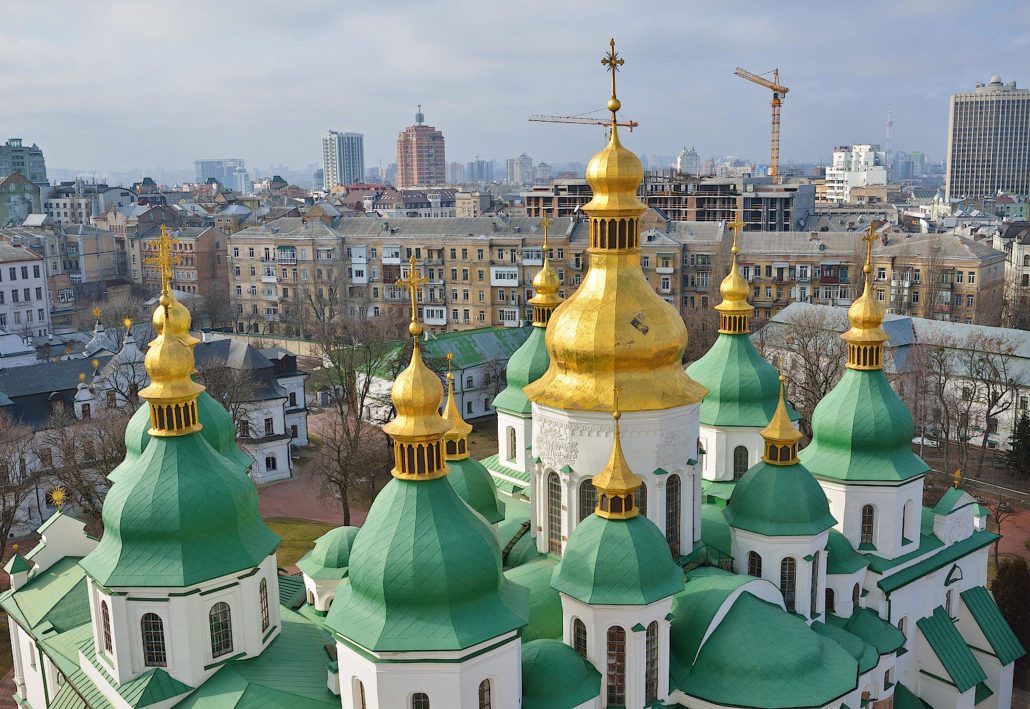Finding Hope in a Ukrainian Orphanage

PART I (of 5)
This is the first in a five-part series on one family’s international adoption experience.
The lights flickered again as a reminder that we would soon be without power for days, perhaps weeks. I sat next to my son, Michael, as he took long, slow drags on his cigarette, and we watched wind-driven whitecaps forming on the creek behind our house..

Sustained winds were approaching 70 miles per hour as we prepared for a direct hit from Hurricane Florence. With the storm approaching, all seemed right with the world somehow. My adult son and I were sharing an experience that we would never forget. We weren’t just riding out the storm together, we were getting to know each other again. It seemed like only yesterday we were sitting in a courtroom in Ukraine petitioning to adopt Michael and his sister.
My mind was ablaze with memories of the struggles that preceded this moment. Sleepless nights, tears, words exchanged in anger and most of all fear about my son’s future. But here we were in a moment of gratitude; we were no longer father and child struggling against each other, but two men sharing our deepest thoughts with nowhere to be but in the present.
The lights flickered one final time, and then the power went out.
How we ended up in Ukraine …
We were in our early twenties when we married, so the thought of “childbearing” wasn’t something that my wife, Christine, and I gave much consideration. In my mind, we were still at the apex of youth and children were a far-off prospect. But after a few years of spur-of-the-moment road trips and hanging out with friends in coffee shops, we settled into a routine, and eventually found ourselves not trying not to have children. It wasn’t a quite a quest to conceive, but we figured that we would eventually end up with a baby.
As months of waiting-to-see-what-happened turned into a few years, we sought the advice of physicians, who told us, “Take these pills, and you’ll likely conceive in a few months; you’ll have a baby by the end of the year!” But there was no such luck for us. When the words of these obstetric soothsayers proved false, they introduced us to three words – Polycystic Ovarian Syndrome – that translated (for us): “infertility.”

“The next step is a minor surgical procedure,” we were told by the physician, and at that point we said goodbye to the doctors and began to explore other options. One of us, I don’t remember who, said something like, “If we can’t conceive a biological child, perhaps we should explore adoption,” and so the quest began.
Had we been born several generations earlier, we would have marched down to the local orphanage run by Catholic Charities (or some other benevolent organization) to fill out paperwork to adopt. However, with the advent of treatment programs for chemically addicted parents, foster care as a transitional option and a generally better support network for single mothers, orphanages in the United States have fallen by the wayside. They have since been replaced by modern agencies that primarily facilitate “open adoption,” a process where birth-mothers choose adoptive parents for their baby as opposed to adoptive parents finding and choosing a child to adopt.
What followed was a popularity contest of sorts that neither of us could have imagined. We put together a color, glossy brochure to market ourselves to prospective birth-mothers. We printed “calling cards” with baby rattles and our smiling faces on them. We handed these out to anyone who might mention an unplanned pregnancy or a struggling teenage mother. It was ridiculous and humiliating on so many levels.
We understood that we were young, and our “competitors” in the race for a new baby were generally more established. Our house was only 1000 square feet and lay within the city limits while other folks lived in suburban McMansions. Our household income hovered around $80,000 while many other aspiring adoptive couples earned multiple-six-figures. In short, we couldn’t compete. As months dragged on into years, our hopes of adopting diminished.
Then, while discussing the matter with friends over a glass of wine, one of them said, “Have you thought about international adoption? I have a friend from law school who runs an adoption agency in Ukraine.”
In spite of all the obstacles, we found ourselves in Kiev, Ukraine in the dead of winter, 2002 after an extensive home-study with a social worker, lots of scrimping and saving, enduring a layoff in the middle of the dot.com bust, relocation in pursuit of a new job and working full-time while waiting tables 3 nights a week to pay for all of the adoption related expenses.
In Country
While Christine took in some Russian language television, I went out to exchange some US Dollars for Ukrainian Hryvnia before being gently mugged by several handsome, thick-necked Ukrainian thugs. I resolved not to visit the currency exchanges without a trusted local by my side, and exhausted from travel, we fell asleep in a strange country with no idea what lay ahead.

The next morning, we were whisked away by several employees of our adoption agency to make the first stop on the road to adoption – the National Adoption Center.
Most adoptive parents have their sights set on the same goal: a healthy baby, perhaps two, of a certain sex, but not an infant (because Ukrainians adoptive parents snatch up Ukrainian newborns before the foreigners arrive).
Christine and I, however, presumed little about the children we hoped to adopt. We resolved to be open-minded throughout the process. Our one assumption was that our adopted children would be toddlers around the age of two. But, to paraphrase the great poet Robert Burns, “The best laid plans of mice and men often take an unexpected turn.”